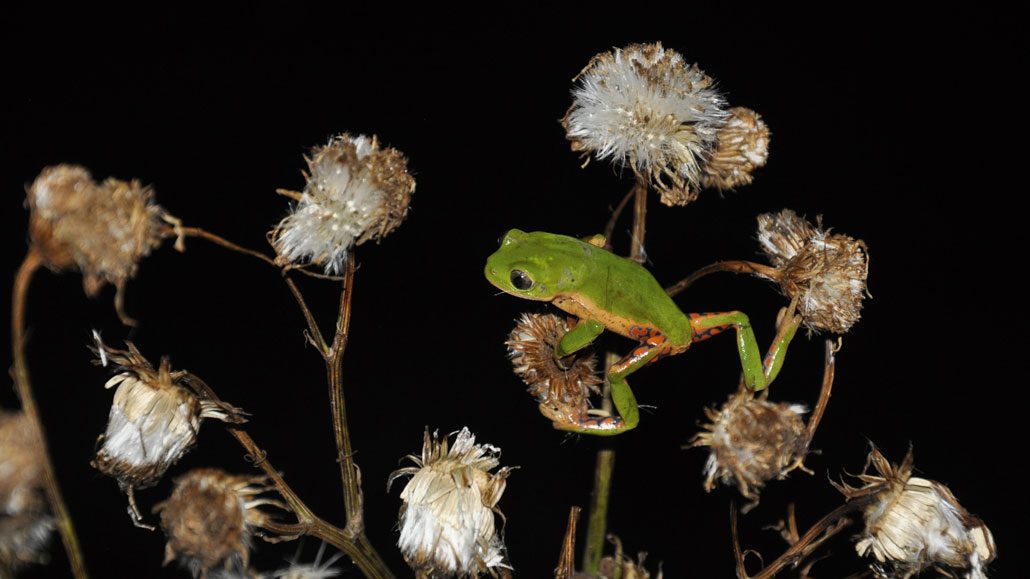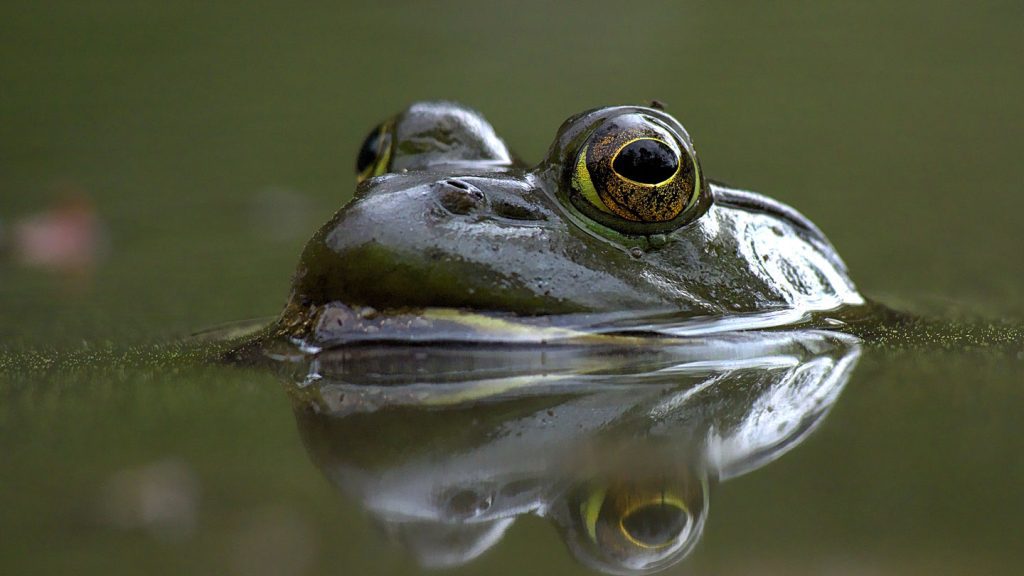They found American bullfrog DNA not far from the only known habitat of the rare Pithecopus rusticus tree frog in Brazil. This rare frog species is critically endangered and lives in Brazil. a small, Bullfrogs are originally from the eastern United States, but they have become invasive in other places. They discovered genetic traces of bullfrogs in the high-elevation grasslands of Santa Catarina, which could be a sign of trouble for the rare tree frog species.
Bullfrogs are small frogs that are native to the eastern United States but have become invasive in other areas. This discovery could indicate trouble for the rare frog species that lives in Brazil. P. rusticusResearchers reported their findings in the March issue of the Journal for Nature Conservation. The researchers are concerned because the rare frogs are in danger due to the rapid degradation of their habitat and the small size of their population..
The neon green, orange, and black frogs are small, with adult males measuring about 35 millimeters from snout to vent – which is between the size of a golf ball and a quarter. After the species was first found in Santa Catarina state in 2009 and described in 2014, the researchers have searched for other populations but have not found any. The frogs have been described in scientific literature. The researchers have conducted surveys in similar high-elevation grasslands nearby, but they have not found another population of the rare frogs.
Julia Ernetti, an ecologist from the State University of Campinas in Brazil, emphasized the urgent need to find additional frog populations for conservation efforts.
Since field surveys turned up nothing, the researchers tried a new method by looking for traces of the frogs' DNA in the environment. They collected 24 water samples in and around the Wildlife Refuge of Campos de Palmas in December 2020, but did not find any trace of the frogs' DNA. However, they did find evidence of the presence of the American bullfrog in the refuge. P. rusticus The known population of the frogs is about 2 kilometers away from the refuge, separated by a highway.
The team's analysis did not find any DNA of the rare frog species, but it did reveal signs of the American bullfrog in the refuge. P. rusticus The traces of the American bullfrog's DNA in the refuge serve as a warning of the potential harm to the native frog species.The American bullfrog is known as Lithobates catesbeianus.Julia Ernetti expressed concern about the potential presence and harm of the American bullfrog to native species.

It is not surprising to find traces of the bullfrogs in the refuge, considering that farmers brought them to Brazil in 1935, Ernetti explains. There are both farmed and wild populations in Santa Catarina and its neighboring state, Paraná.
Nathan Snow, a wildlife biologist with the U.S. Animal and Plant Health Inspection Service in Fort Collins, Colo., stated that the situation is alarming. He explained that bullfrogs are invasive and pose a threat to native amphibians as they compete for food and territory, and can also spread diseases.
Bullfrogs could spread deadly diseases like the chytrid fungus, which has caused the extinction of amphibian populations across the Americas. The chytrid fungus is deadly.It has caused the extinction of amphibian populations across the Americas.SN: 5/10/18The bullfrogs' calls could interfere with those of native species in the area, impacting their reproductive success and potentially leading to population declines and an increased risk of extinction for the native species.
Bullfrogs can also consume P. rusticus, another danger to its population, although there are no indications, yet, of that type of predation.
P. rusticus existence is so delicate that any losses caused by bullfrogs would be a significant issue, Ernetti says. “Our detection informs us of the necessity for the implementation of effective strategies for the identification and elimination of foreign and intrusive species, with the goal of safeguarding native species.”
That might be simpler said than done, Snow says. Once established, bullfrogs are very challenging to remove. “There are few, if any, successful and efficient control methods to manage invasive bullfrogs,” he and wildlife biologist Gary Witmer wrote in a 2010 review. “For delicate ecosystems like the subtropical highland grasslands of Brazil,” Snow says, “an invasion of bullfrogs could be devastating for native and endangered amphibians.”



